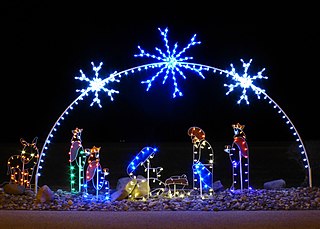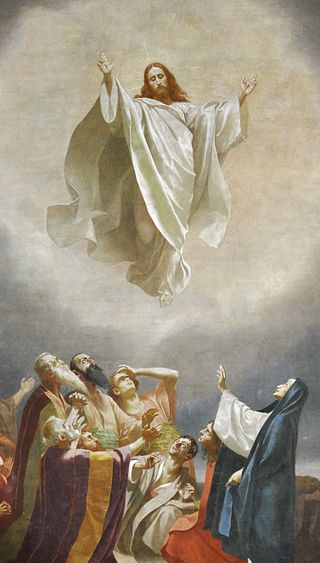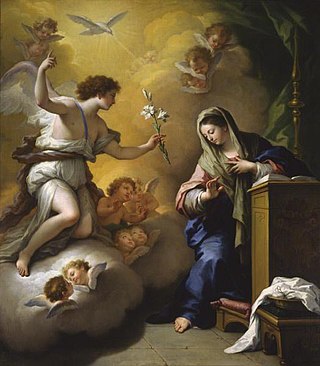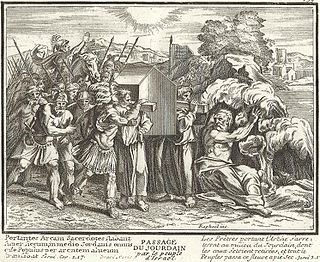Related Research Articles

Christmas is an annual festival commemorating the birth of Jesus Christ, observed primarily on December 25 as a religious and cultural celebration among billions of people around the world. A feast central to the Christian liturgical year, it is preceded by the season of Advent or the Nativity Fast and initiates the season of Christmastide, which historically in the West lasts twelve days and culminates on Twelfth Night. Christmas Day is a public holiday in many countries, is celebrated religiously by a majority of Christians, as well as culturally by many non-Christians, and forms an integral part of the holiday season organized around it.

Jewish holidays, also known as Jewish festivals or Yamim Tovim, are holidays observed in Judaism and by Jews throughout the Hebrew calendar. They include religious, cultural and national elements, derived from three sources: biblical mitzvot ("commandments"), rabbinic mandates, and the history of Judaism and the State of Israel.

Sukkot is a Torah-commanded holiday celebrated for seven days, beginning on the 15th day of the month of Tishrei. It is one of the Three Pilgrimage Festivals on which those Israelites who could were commanded to make a pilgrimage to the Temple in Jerusalem. In addition to its harvest roots, the holiday also holds spiritual importance with regard to its abandonment of materialism to focus on nationhood, spirituality, and hospitality, this principle underlying the construction of a temporary, almost nomadic, structure of a sukkah.

Pentecost is a Christian holiday which takes place on the 50th day after Easter Sunday. It commemorates the descent of the Holy Spirit upon the Apostles and other followers of Jesus Christ while they were in Jerusalem celebrating the Feast of Weeks, as described in the Acts of the Apostles.

In the Western liturgical year, Lady Day is the traditional name in some English-speaking countries of the Feast of the Annunciation, which is celebrated on 25 March, and commemorates the visit of the archangel Gabriel to the Virgin Mary, during which he informed her that she would be the mother of Jesus Christ, the Son of God.

Emanuel Swedenborg was a Swedish pluralistic-Christian theologian, scientist, philosopher and mystic. He became best known for his book on the afterlife, Heaven and Hell (1758).

The Feast of Corpus Christi, also known as the Solemnity of the Most Holy Body and Blood of Christ, is a Christian liturgical solemnity celebrating the Real Presence of the Body and Blood, Soul and Divinity of Jesus in the elements of the Eucharist; it is observed by the Latin Church, in addition to certain Western Orthodox, Lutheran, and Anglican churches. Two months earlier, the institution of the Eucharist at the Last Supper is observed on Maundy Thursday in a sombre atmosphere leading to Good Friday. The liturgy on that day also commemorates Christ's washing of the disciples' feet, the institution of the priesthood, and the agony in the Garden of Gethsemane.

In the United States, public holidays are set by federal, state, and local governments and are often observed by closing government offices or giving government employees paid time off. The federal government does not require any private business to close or offer paid time off, as is the case for most state local governments, so employers determine which holidays to observe.
Mothering Sunday is a day honouring mother churches, the church where one is baptised and becomes "a child of the church", celebrated since the Middle Ages in the United Kingdom, Ireland and some Commonwealth countries on the fourth Sunday in Lent. On Mothering Sunday, Christians have historically visited their mother church—the church in which they received the sacrament of baptism.

Jerusalem Day is an Israeli national holiday that commemorates the "reunification" of East Jerusalem with West Jerusalem following the Six-Day War of 1967, which saw Israel occupy East Jerusalem and the West Bank, effectively annexing the former. It is celebrated annually on 28 Iyar on the Hebrew calendar, and is marked officially throughout Israel with state ceremonies and memorial services.

The Feast of the Ascension of Jesus Christ commemorates the Christian belief of the bodily Ascension of Jesus into Heaven. It is one of the ecumenical feasts of Christian churches, ranking with the feasts of the Passion and Pentecost. Following the account of Acts 1:3 that the risen Jesus appeared for 40 days prior to his Ascension, Ascension Day is traditionally celebrated on a Thursday, the fortieth day of Easter, although some Christian denominations have moved the observance to the following Sunday, sometimes called Ascension Sunday. The day of observance varies by ecclesiastical province in many Christian denominations, as with Methodists and Catholics, for example.
The National Day of Prayer is an annual day of observance designated by the United States Congress and held on the first Thursday of May, when people are asked "to turn to God in prayer and meditation". The president is required by law to sign a proclamation each year, encouraging all Americans to pray on this day.

The General Church of the New Jerusalem is an international church based in Bryn Athyn, Pennsylvania, and based on the Old Testament, the New Testament, and the theological works of Emanuel Swedenborg. The General Church of the New Jerusalem distinguishes itself from other Swedenborgian churches by teaching that the Writings for the New Church are the Heavenly Doctrine revealed by the Lord in His Second Coming and have authority equal to the Old and New Testaments. It is larger, newer, and more conservative than the Swedenborgian Church of North America.
The New Church is any of several historically related Christian denominations that developed as a new religious group, influenced by the writings of scientist and mystic Emanuel Swedenborg (1688–1772).

The Feast of the Annunciation, in Greek, Ο Ευαγγελισμός της Θεοτόκου, contemporarily the Solemnity of the Annunciation, and also called Lady Day, the Feast of the Incarnation, or Conceptio Christi, commemorates the visit of the archangel Gabriel to the Virgin Mary, during which he informed her that she would be the mother of Jesus Christ, the Son of God. It is celebrated on 25 March each year. In the Catholic Church, if 25 March falls during the Paschal Triduum, it is transferred forward to the first suitable day during Eastertide. In Eastern Orthodoxy and Eastern Catholicism, it is never transferred, even if it falls on Pascha (Easter). The concurrence of these two feasts is called Kyriopascha.

Thanksgiving is a national holiday celebrated on various dates in the United States, Canada, Grenada, Saint Lucia, Liberia, and unofficially in countries like Brazil and Philippines. It is also observed in the Dutch town of Leiden and the Australian territory of Norfolk Island. It began as a day of giving thanks for the blessings of the harvest and of the preceding year. Thanksgiving is celebrated on the second Monday of October in Canada and on the fourth Thursday of November in the United States and around the same part of the year in other places. Although Thanksgiving has historical roots in religious and cultural traditions, it has long been celebrated as a secular holiday as well.

In Abrahamic religions, the Sabbath or Shabbat is a day set aside for rest and worship. According to the Book of Exodus, the Sabbath is a day of rest on the seventh day, commanded by God to be kept as a holy day of rest, as God rested from creation. The practice of observing the Sabbath (Shabbat) originates in the biblical commandment "Remember the sabbath day, to keep it holy".
A Day of Prayer is a day allocated to prayer, either by leaders of religions or the general public, for a specific purpose. Such days are usually ecumenical in nature. They usually are treated as commemorative in nature, rather than as actual liturgical feast days or memorials.

Christian observances of Jewish holidays is a practice evidenced since the time of Christ. Specific practices vary among denominations: these holidays may be honored in their original form in recognition of Christianity's Jewish roots or altered to suit Christian theology. Symbolic and thematic features of Jewish services are commonly interpreted in a Christian light: for example, the Paschal Lamb of the Passover Seder is viewed as a symbol of Christ's sacrifice.

Yom HaAliyah, or Aliyah Day, is an Israeli national holiday celebrated annually according to the Jewish calendar on the tenth of the Hebrew month of Nisan to commemorate the Jewish people entering the Land of Israel as written in the Hebrew Bible, which happened on the tenth of the Hebrew month of Nisan. The holiday was also established to acknowledge Aliyah, immigration of Jews to the Jewish state, as a core value of the State of Israel, and honor the ongoing contributions of Olim, Jewish immigrants, to Israeli society. Yom HaAliyah is also observed in Israeli schools on the seventh of the Hebrew month of Cheshvan.
References
- ↑ Merriam-Webster's Encyclopedia of World Religions. Springfield, MA, 1999. p. 797
- ↑ Melton, J. Gordon. Religious Celebrations: An Encyclopedia of Holidays, Festivals, Solemn Observances, and Spiritual Commemorations: Religious Celebrations. Santa Barbara, 2011. Vol. 1, pp. 625–626
- ↑ True Christian Religion: Containing the Universal Theology of the New Church: Which was Foretold by the Lord in Daniel, Chapt. Vii. 5, 13, 14, and in the Apocalypse, Chapt. Xxi. I, 2. Francis Bailey. 1792.
- ↑ Schreck, Eugene J. E. Early History of the New Church in Birmingham. London, 1916, p. 27.
- ↑ "NewChurchHistory.org". newchurchhistory.org. Retrieved 2021-02-18.
- ↑ New Magazine of Knowledge, Vol. II, June 1791, p. 234.
- ↑ "NewChurchHistory.org". newchurchhistory.org. Retrieved 2021-02-18.
- ↑ Hindmarsh, Robert. The Rise and Progress of the New Jerusalem Church. London, 1861, p. 203.
- ↑ Sewall, Frank. "The Observance of the Nineteenth of June," New Church Life, Vol. 27, 1907, p. 109.
- ↑ Knight, George W. and Commons, John R. The History of Higher Education in Ohio, Washington, D.C., 1891, p. 227
- ↑ New Jerusalem Magazine, Vol. 29, July 1856, p. 47.
- ↑ Wright, John. Early Prayer Books in America. St. Paul, 1896
- ↑ Block, Marguerite Beck. The New Church in the New World, Holt, Rinehart, and Winston, 1932, p. 263
- ↑ "NewChurchHistory.org". www.newchurchhistory.org. Retrieved 2021-02-18.
- ↑ Meyers, Mary Ann. A New World Jerusalem: The Swedenborgian Experience in Community Construction, Greenwood Press, 1983, p. 60.
- ↑ "NewChurchHistory.org". newchurchhistory.org. Retrieved 2021-02-18.